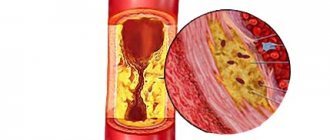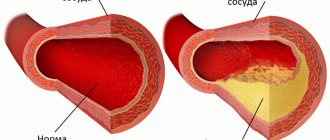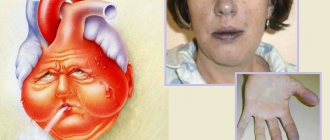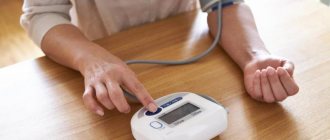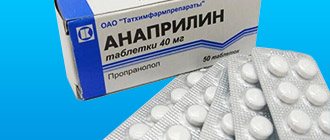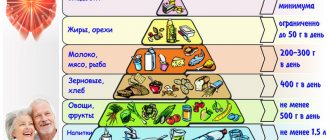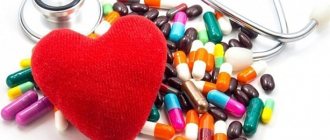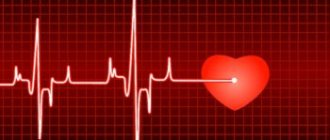+RU
Consultation with a Phlebologist in Moscow, Articles, Reviews of Clinics
Join us and follow the news on social networks
How is cardiovascular disease (CVD) prevented? Who is at risk, and what methods of healing the body are used? According to WHO (World Health Organization), mortality from pathologies of the heart and blood vessels accounts for almost 30% of the total number of deaths in the world.
Looking at these numbers, it would be reasonable to assume that the pathology is easier to prevent than to treat. That is why prevention of CVD disease should be an integral part of the life of every citizen who cares about their health.
Take care of your health!
- Ways to prevent diseases
- Risk levels according to SCORE scale
- Proper nutrition is the key to health
- Excess weight as a companion to heart problems
- Down with bad habits
- Proper physical education is an indispensable assistant in health improvement
- How to properly manage stress
- We monitor the tonometer readings
- Regular checkups
- Taking medications
- Spa treatment
Ways to prevent diseases
Prevention of diseases of the circulatory system is carried out depending on the state of health, risk factors and the presence of existing pathologies.
In total, 2 types of prevention can be distinguished:
- Primary . This is a system of health measures aimed at preventing the occurrence and impact of unfavorable factors in the development of diseases, namely:
- rational rest and work regime;
- physical activity;
- eliminating bad habits;
- reduction of stressful situations.
- Secondary. This mainly includes targeted sanitary and hygienic education, courses of preventive treatment and targeted health improvement. These may include the following events:
- exercise therapy;
- massage;
- physiotherapy;
- Spa treatment;
- drug support.
In this regard, the prevention of diseases of the cardiovascular system includes 10 main measures:
- healthy eating;
- fight against excess weight;
- self-monitoring of blood pressure and its timely reduction;
- dealing with stressful situations;
- giving up bad habits;
- playing sports;
- Spa treatment;
- regular monitoring of cholesterol and blood sugar levels;
- systematic medical examinations;
- taking medications to thin the blood and strengthen the vascular wall.
Both primary and secondary prevention are aimed at developing a correct perception of the very concept of health and attitude towards the changing capabilities and needs of the body. Read the entire article to find out what the prevention of cardiovascular diseases is.
Simple but very effective methods
Causes of vascular problems
With age, the blood becomes thicker, its flow slows down and becomes more difficult. The walls of blood vessels are no longer so elastic, their reaction is slowed down. All this leads to the fact that an older person is more likely to experience an attack of high blood pressure.
Old age is one of the reasons, but not the only one.
Vessels cease to be healthy due to lifestyle:
- Lack of physical activity.
- Bad habits: smoking, alcohol abuse.
- Excess fatty foods in the diet, which leads to the development of atherosclerosis.
- Poor nutrition, which causes weight gain and disrupts insulin synthesis (diabetes appears).
- Statute of limitations for taxes for individuals and legal entities - general concepts and legislative framework
- How do vascular problems manifest themselves after 50 years?
- Cream for leveling a cake under mastic, ganache or glaze - step-by-step recipes with photos
Risk levels according to SCORE scale
Prevention of heart and vascular diseases begins, in fact, with desire. To “warm it up” a little, you need to interest the person, at least from the point of view of his health.
The absolute risks of fatal cardiovascular complications in the next 10 years are assessed using the European SCORE scale. It is intended for countries with very high risks and the Russian Federation is included in this group.
The total risk factor may be significantly higher in the following individuals:
- in people with obesity and little physical activity;
- in patients with diabetes mellitus;
- with proven atherosclerotic damage to the carotid arteries, but without cerebrovascular accident;
- with moderate and chronic kidney failure;
- in the presence of a hereditary predisposition;
- in case of social disadvantage.
Table 1: SCORE risk scores:
| Risk level and total cardiovascular risk according to the SCORE scale | Risk factors | Recommendations |
| Low (less than 1%) |
|
|
| Moderate (1% to 5%) |
| |
| High (5% to 10%) |
| In addition to the above, it is recommended to more strictly control the following indicators:
|
| Very high (more than 10%) |
| Additionally, it is worth noting the strict control of LDL content. Their level should be less than 1.8 mmol/l. If it is impossible to achieve such results, it is necessary to reduce it by at least 50% |
Photos of risks on the SCORE scale
Fighting physical inactivity
Physical inactivity is one of the common causes of heart and vascular diseases. This is confirmed by facts about the low physical activity of city residents and older people.
Physical education and frequent exposure to fresh air will allow you to:
- activate blood circulation (see “Foods that improve blood circulation”);
- strengthen the myocardium and vascular walls;
- accelerate the removal of “bad” cholesterol;
- saturate body tissues with oxygen;
- normalize metabolic processes.
Remember! Physical activity should be appropriate for age and general health. Be sure to check with your doctor to see if you have any contraindications for physical education, and what loads are acceptable for you!
Proper nutrition is the key to health
Prevention and treatment of CVD simply cannot do without a healthy diet. The condition of the heart muscle and blood vessels directly depends on the daily diet, and the more we consume harmful foods, the more the body’s main “pump” wears out.
Food is more than just satiating a person. It should bring not only moral pleasure, but also be a source of vitamins so necessary to maintain health.
To prevent the development of CVD, you need to follow these rules when preparing your diet:
- eat foods rich in polyunsaturated acids (lean fish, seafood, avocados, flaxseed oil, nuts);
- eat less fatty meat and poultry;
- refuse fried, spicy, sour, salty, fatty foods;
- reduce salt and sugar intake;
- use all dairy products with a low fat content;
- do not overload the heart and blood vessels with tonic and sweet carbonated drinks;
- eat as much fresh vegetables and fruits as possible;
- Among vegetable oils, it is best to prefer olive oil;
- limit the consumption of sweets and flour;
- eat legumes, dried fruits, herbs and oatmeal - they reduce blood cholesterol;
- It’s better to cook easily digestible food without frying; you can bake, grill, steam or boil;
- include fermented milk products in the diet;
- should not be conveyed, it is better to leave the table feeling slightly hungry;
- drink as much water as possible (at least 1.5-2 liters a day), natural juices, fruit drinks, unsweetened compotes, still mineral water;
- limit coffee consumption (no more than 1 cup per day);
- It is preferable to eat no more than 1-2 eggs per week.
Healthy food
Junk foods containing saturated fats, sugar, salt and caffeine increase the level of “bad” cholesterol in the blood, as a result of which atherosclerotic plaques can form on the vascular walls, gradually increasing in size and narrowing the lumen of the vessel.
This leads to wear and tear of the vascular network, increased stress on the heart, and subsequently to ischemia, atherosclerosis, thrombosis, arterial hypertension, myocardial infarction, etc. You can learn more about the principles of a healthy diet from the video in this article.
The principle of proper nutrition
Causes of cardiovascular diseases
There are enough factors that lead to this disease in our time. As mentioned above, our lifestyle is a fertile ground that helps this ailment progress.
Let's list them:
- The most important reason is heredity. If someone in your family has had problems in this area, most likely you will encounter them too.
- Injuries. Very often, the disease can be influenced by injuries.
- Poor nutrition. We increasingly began to eat at fast foods, where the main components are fats and carbohydrates. As a rule, in order to quickly cook a cutlet or french fries, they are fried in hot oil, which sometimes is not changed very often. And because of this oil, cholesterol levels in our body increase, which interferes with the normal functioning of blood in our body. Or another rather relevant example: when working at home, we often eat while sitting at the computer, and arrange dry snacks for ourselves without looking up from the monitor. Yes Yes! And don't say you don't do that
